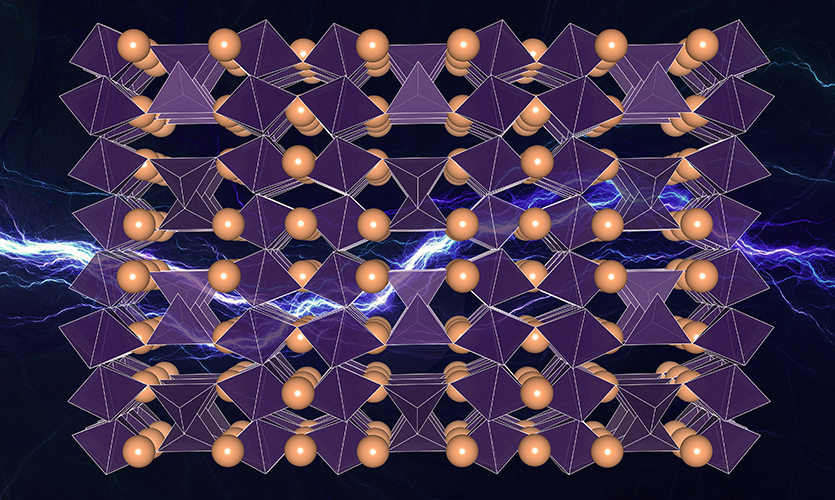The Problem:
How to unite multiple incompatible properties in a single material?
How to unite multiple incompatible properties in a single material?
The creation of the oxide compound Ca3Co3O8 would combine three properties typically seen as incompatible.
Ca3Co3O8 blurs the distinction between metals, polar materials, and magnets and could lead to a new line of research.
Professor James Rondinelli, Research Assistant Professor Danilo Puggioni, Lauren Walters (PhD '22)
Recent work from Northwestern Engineering’s James Rondinelli could lead to a new class of metals that defy conventional wisdom.

In a study entitled “A Correlated Ferromagnetic Polar Metal By Design” published on April 11th in the journal Nature Materials, Rondinelli unveiled a class of metals that challenge the status of quo of how metals behave, opening a realm where quantum strangeness reigns. With the creation of the compound Ca3Co3O8, the traditional distinctions between metals, polar materials, and magnets blur, challenging the fundamental understanding of what interactions give rise to material properties.
“This achievement opens the door to a frontier of unique quantum phenomena never before seen in classical systems and conventional metals,” Rondinelli said.
Traditionally, metals like copper, aluminum, and gold have been characterized by their ability to conduct electricity through the free flow of electrons among atoms. Yet, most metals maintain a geometric arrangement that preserves inversion symmetry — a property where reversing the positions of all atoms wouldn't be discernible. As such, one of the most fundamental rules of physics is that metals cannot possess an internal electric field because of this symmetric arrangement of atoms and the high concentration of free electrons. This makes metals function as opposites to insulating ferroelectrics — materials that spontaneously have their own electric fields and broken inversion symmetry. Moreover, most conventional metals and insulating ferroelectrics do not tend to exhibit magnetic behavior.
Rondinelli’s paper explores the possibility of metals exhibiting ferroelectric-like characteristics — a notion long considered contradictory — and a strategy to harmonize these properties through atom-by-atom design. Through the use of quantum mechanical simulations and collaborative experimentation, his Materials Theory and Design Group predicted Ca3Co3O8 — a polar metal devoid of inversion symmetry yet imbued with ferromagnetic properties.

“This material and its derivatives will serve as an exemplary group to explore the diverse range of emergent states combining polarity, magnetism, and metallicity, paving the way for exciting functionalities in electronic and spintronic devices,” Rondinelli said.
One of those phenomena is intrinsic magnetochiral anisotropy, where certain materials act in a special way when electricity flows through them. Unlike regular metals, where the resistance to electricity is the same no matter which way the current goes, in these materials, the resistance changes depending on the direction of the current. This discovery could improve the performance and architectures of our electronic devices, giving researchers more control over how magnetism and electricity work together in our gadgets. Since Ca3Co3O8 also exhibits the topological Hall effect — where an electric current is deflected when passing through certain materials owing to their unique electronic structure influenced by quantum mechanics — it holds potential applications in spintronics and the development of next-generation electronic devices.
“This would leverage the unique properties of topological quantum materials to achieve unprecedented functionalities,” Rondinelli said.
Moving forward, Rondinelli and his team will dive deeper into understanding the intricate relationship between polarity and magnetism within metallic systems. This involves performing additional studies to investigate the nuanced mechanisms underlying these interactions and their implications for material properties and applications.
“By leveraging this methodology, we seek to access and explore even more diverse and exotic correlated electronic states in materials,” Rondinelli said. “This will involve synthesizing new compounds, conducting theoretical modeling, and performing advanced characterization techniques to elucidate the behavior of these materials at the atomic and electronic levels.”